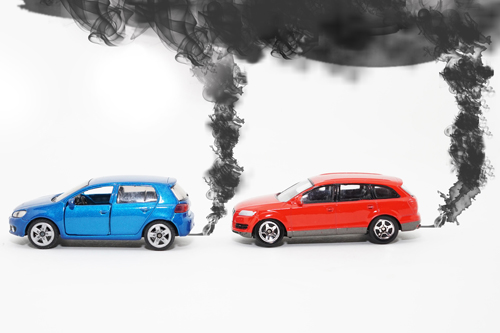 Fotolia.com © WS-Design
Fotolia.com © WS-Design
Over four in five Euro 5 diesel cars produce more than three times their laboratory limit value for NOx when driven on the road, and two-thirds of Euro 6 diesel cars still emit more than three times their limit.
Published one year after the Dieselgate scandal first hit the headlines, a new study by Transport and Environment (T&E) reveals that all major diesel car brands are selling models that in real-world driving emit far higher levels of nitrogen oxides (NOx) than allowed.
More surprisingly, it reveals that Volkswagen is currently selling the least-polluting Euro 6 diesel vehicles. However, the better performance of Volkswagen Euro 6 cars has nothing to do with Dieselgate, but rather with better technology choices made before the scandal burst.
All new diesel cars produced after September 2015 have to comply with the EU’s Euro 6 exhaust emissions standard, which sets a limit of 80 milligrammes NOx per km – a significant reduction from the previous Euro 5 standard (applicable 2011–2015) which allowed 180 mg NOx per km. But these limits are tested in laboratory conditions only.
Based on emissions test data taken from investigations conducted by the British, French and German governments, as well as a large public database, T&E analysed data from around 230 diesel car models. It was found that in real-world driving conditions not one single brand complies with the latest
Euro 6 air pollution limits for diesel cars and vans – Fiat and Suzuki diesel cars on average pollute 15 times more than the legal NOx limit; Renault-Nissan vehicles exceed the limit more than 14 times; Opel/Vauxhall pollute ten times more; while Volkswagen diesel cars pollute twice as much as the Euro 6 standard.
For Euro 5 vehicles, the ranking of the worst-performing companies was slightly different. Renault (including Dacia) pollute eight times over the standard, while Land Rover, Hyundai, Opel/Vauxhall, Nissan, Fiat and Kia all exceed the limit by six times or more.
T&E’s calculations also show that 29 million Euro 5 and Euro 6 diesel cars and vans currently driving on roads in the EU can be classified as “dirty” in the sense that in real driving they are at least three times over the relevant NOx limit. All these vehicles were approved for sale by national type approval authorities. The largest number of “dirty” diesels is found on French roads (5.5 million), followed by Germany (5.3 million), the UK (4.3 million), Italy (3.1 million), Spain (1.9 million) and Belgium (1.4 million).
Last year, the European Environment Agency reported that nitrogen dioxide (NO2), mainly created by diesel engines in urban areas, is responsible for an estimated 72,000 premature deaths in the EU. NOx emissions also contribute to excess levels of fine particulate matter (PM2.5) and ground-level ozone, which are responsible for more than 400,000 premature deaths in the EU. Moreover, emissions of NOx cause eutrophication and acidification of natural ecosystems, resulting in damage to biodiversity.
The EU decided last year to tighten the Euro 6 car emissions regulation, with effect from September 2017. But new diesel cars will still be allowed to emit 2.1 times the limit value in real driving tests (RDE) until 2020, and 1.5 times the limit value as from 2021.
Christer Ågren
T&E press release: www.transportenvironment.org
The report “Dieselgate: Who? What? How?”: https://www.transportenvironment.org/publications/dieselgate-who-what-how
DieselgateThe United States Environmental Protection Agency announced on 18 September 2015 that diesel cars from model years 2009 to 2015 produced by the Volkswagen Group were breaching the US federal emissions legislation by fitting illegal software (defeat device) to cheat emissions tests. The device recognised that a vehicle was undergoing a laboratory test and lowered the emissions of NOx so that the vehicle achieved the strict US regulatory limit. On the road, the same vehicle produced up to 40 times more NOx emissions. VW later admitted that it had fitted the illegal software to 11 million vehicles worldwide – 8.5 million of which are in Europe and 500,000 in the US. |
 Above and beyond the legal NOx limits. Source: T&E
Above and beyond the legal NOx limits. Source: T&E


















